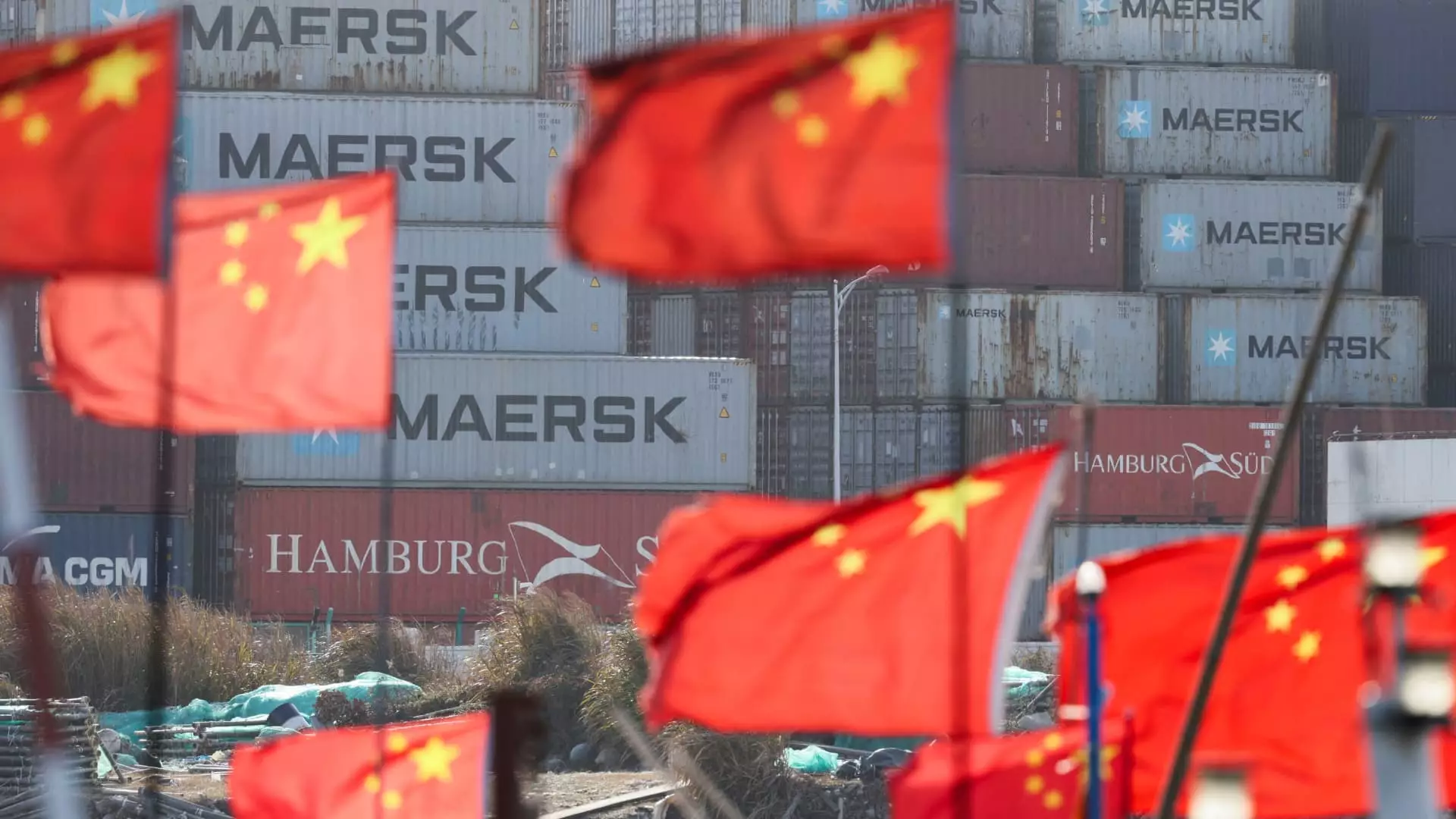The announcement of new tariffs by the United States, which have surged to an alarming 34% on Chinese imports, paints a stark picture of escalating trade tensions. Such unilateral moves by the U.S. government, spearheaded by former President Donald Trump, exhibit a pattern of confrontational economic policy that aims to pressure countries into submission through punitive measures. However, what the United States may not realize is that China is not simply a victim in this scenario; the nation is strategically poised to pivot and adapt, highlighting a resilience that warrants closer examination.
The recent 54% composite tariff on Chinese exports is not just an isolated constraint; it reflects a broader trend of increasing levies on numerous nations, including those in the European Union and countries across Asia. The implications extend beyond mere numbers, as they bring forth an environment of uncertainty for global trade. While the U.S. may perceive itself as asserting dominance, it may inadvertently be fostering a reinforced solidarity among nations affected by such tariffs. China’s immediate response, as articulated by the Ministry of Commerce, was not to lash out but rather to encourage dialogue, illustrating a nuanced shift away from combative retaliation.
A Domestic Focus Amidst Challenges
Amid these trials, China appears to be recalibrating its economic strategy. Analysts like Bruce Pang suggest that the focus will not rest solely on retaliating with tariffs, but rather on enhancing domestic consumption and bolstering economic health. This isn’t just about survival; it’s about sowing the seeds for sustainable growth amidst external pressures. A multi-faceted approach centered on boosting the domestic economy and diversifying trade partnerships signals a proactive stance.
President Xi Jinping’s newfound willingness to engage with tech entrepreneurs, such as Alibaba’s Jack Ma, further indicates an intention to support private sectors that can potentially foster innovation and resilience. This pivot away from stringent regulatory measures highlights an essential understanding that in adversity lies the opportunity for an economic renaissance. By amplifying domestic consumption, China aims to cushion itself against foreign tariff impacts while laying the foundation for long-term growth.
This calculated strategic redirection promises to mitigate risks associated with overdependence on the export market—an important consideration since approximately 20% of China’s GDP is linked to international trade. The continued emphasis on domestic market strength is not just a reaction to tariffs but an astute acknowledgment of the need for economic diversification.
China’s New Trade Relationships
Furthermore, as the U.S. finds itself engaged in tariffs against a growing list of nations, China’s expanding trade relationships serve as a powerful countermeasure. The establishment of the Regional Comprehensive Economic Partnership (RCEP) stands testament to China’s strategic maneuvering, effectively creating a vast free trade bloc in which the U.S. find itself sidelined. This coalition not only consolidates China’s economic influence across Asia and beyond but also illustrates how open collaboration can negate the impact of hostile trade policies.
Tidalwave Solutions’ Cameron Johnson highlights that China’s progress in diversifying trade supplies has transcended mere logistics; it represents a profound shift that potentially cedes much of Asia and Africa to Chinese economic influence. What the U.S. may regard as a tactical trade war could lead to an unrecognized strengthening of China’s resolve and capability to forge strong economic relationships in the face of adversity.
Navigating Currency Strength and Economic Growth
China’s control over its currency, particularly the yuan, plays a pivotal role as well. By managing its exchange rate against the dollar, China can absorb some inflationary pressures that tariff impositions bring, thereby impacting U.S. consumer prices indirectly. This maneuver allows China to navigate the economic landscape with an agility that could undermine U.S. aspirations for a significant economic victory rooted in tariffs.
Expecting to achieve growth rates around 5%, despite the tumultuous external factors at play, entails significant effort and robust policy measures from Chinese leadership. Analysts forecast a potential dip in GDP due to tariffs, yet expectations of preparedness through fiscal stimulus underscore a belief in the government’s commitment to economic objectives. The Chinese government is positioning itself not just to weather the storm but to emerge stronger through calculated policy.
What emerges is a narrative that subverts the popular belief of a fragile China susceptible to U.S. pressure. In fact, China’s strategic shifts herald a new chapter of economic diplomacy—one where resilience and adaptability take center stage. By prioritizing domestic health and fostering international alliances, China is crafting its path forward, undeterred by external challenges, while simultaneously redefining its role in the global economy. In this calculated approach, China is illustrated not as a mere player in this geopolitical arena, but as a formidable contender capable of navigating the complexities of global trade dynamics.


Leave a Reply